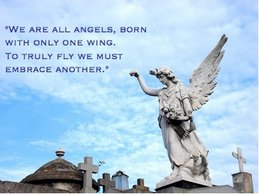Bam Vs. South Lebanon

 Photos via Kamangir. Bam 4 Years after the earthquake. To see more pictures please take a look at the photoblog.
Photos via Kamangir. Bam 4 Years after the earthquake. To see more pictures please take a look at the photoblog.
On December 26, 2003 at 5:27 a.m., a 6.6-Richter earthquake destroyed the historic city of Bam. The death toll was more than 30,000 and more than 75,000 people became homeless with 90% physical destruction of the city. After 4 years only a few houses are built and the government is bogged down with allocating land according to complex Islamic inheritance law instead of rebuilding schools, roads, hospitals, and homes. Most of the landowners died in the earthquake, and in the Islamic Sharia, women don't inhert land if their husbands die. (see the report here from King's College London)
Baztab published a set of pictures (one, two) which show the dismal state of affairs and outright seditious nature of the Islamists (NOT IRANIAN) who are in charge. Thousands of families with young kids are still homeless, and the more the Ayatollahs squander the oil revenues in their doomed "reunication of Islamic Ummah project", the more the Iranian society sinks into inequality and social injustice, the more fiery the pseudo revolutionary rhetoric of its theocratic ruling elite, and the more dogmatic and intolerant their version of Islam.
The tragedy of it all is that while the country is immensely wealthy, a small caste of cultish Islamist/jihadist Ayatollahs and their cronies (IRGC) spend millions of dollars in reconstruction efforts in Lebanon to buy "protection and Ummah allegiance " from foreign mercenaries (read Hizballah):
Along the roadways of southern Lebanon, thousands of banners festoon street lights and utility poles. They feature a distinctive symbol, a red inscription from the center of Iran's flag, protectively swathing Lebanon's iconic green cedar.
The emblem belongs to the Iranian reconstruction organization. Its presence delivers a message that is not lost on critics of Iran's role here, nor supporters who have watched cratered roads filled in, damaged school walls resurrected and life return to some semblance of normalcy over the last year...Whenever the Lebanese government, nonprofit organizations or other donor nations have faltered, Iran and its ally Hezbollah, which dominates most of the municipal governments of the south, have quickly swooped in, residents and officials say. For example, when Qatar slowed reconstruction efforts several months ago because of corruption worries, Iran quickly upped its contribution. "The Qataris were saying a lot of the money was being wasted," said Ibrahim Said, a business owner in Bint Jbeil, a border town that was crushed by Israeli airstrikes during the closing days of the war. "Four months ago, there was a sudden halt in reconstruction, and the Iranians said, 'If you don't want to do it, we'll step in.' " The head of Iran's reconstruction effort says his country has set no spending limit for Lebanon. "Contrary to other countries, we did not decide on a fixed budget for the reconstruction of Lebanon," Hussam Khoshnevis said. "The Islamic Republic decided to pay as much as is needed on the ground." Much of Iran's financial support is invisible. It is channeled through Hezbollah's charity organizations. Immediately following the war, the Shiite militant group paid as much as $12,000 for each destroyed home or apartment.
A large portion of this money was believed to have originated in Iran. In heavily damaged Hrat Hreik, an enclave in a southern suburb of Beirut called Dahiyeh, contractors have removed rubble, repaved roads, rebuilt sidewalks and restored electricity and running water. "We've done this in cooperation with the United Nations Development Program and other donor groups, especially Iran represented through the municipality of Tehran," said Samir Dakkash, head of the local government in Hrat Hreik. "Money was directly paid to contractors, so we don't know how much Iranians spent." Work to rebuild apartment buildings damaged by Israeli airstrikes has also started. Often, even when pro-American donor countries and the Siniora government provide the money, Hezbollah shares the credit.
Its reconstruction arm recently persuaded 70% of those who got grants from the government to funnel their cash into a project that will restore or rebuild 198 buildings under the Hezbollah banner. Elaborate plans include green spaces, parking lots and trees imported from Africa. According to its own accounting, Iran has spent $155 million in Lebanon, about $25 million more than the U.S. government has sent through the U.S. Agency for International Development for reconstruction. Iran says it has rebuilt at least 149 schools, 48 mosques and churches, 10 health clinics, 64 electricity projects and 19 bridges. It continues work on nearly 100 other building and infrastructure projects. It has completed work on 504 roadways, and has 76 underway.
 ABF, for the promotion of human rights and democracy in Iran
ABF, for the promotion of human rights and democracy in Iran



1 comment:
This is a reality of Iran under the rule of mullahs not those rosie pics we see all the time in the western media prepared by the regime people... so sad!
Post a Comment